The third story from Miriah Falce, Enologist at Cairdeas Winery in the Lake Chelan AVA.
Cool year with a slow start
May has been a little bit of a slow month, with quite a few other activities going on as we waited for warm weather and vineyard activity. But it’s slowly been picking up in the vineyard and it’s crazy to think that going into June means summer is basically here!
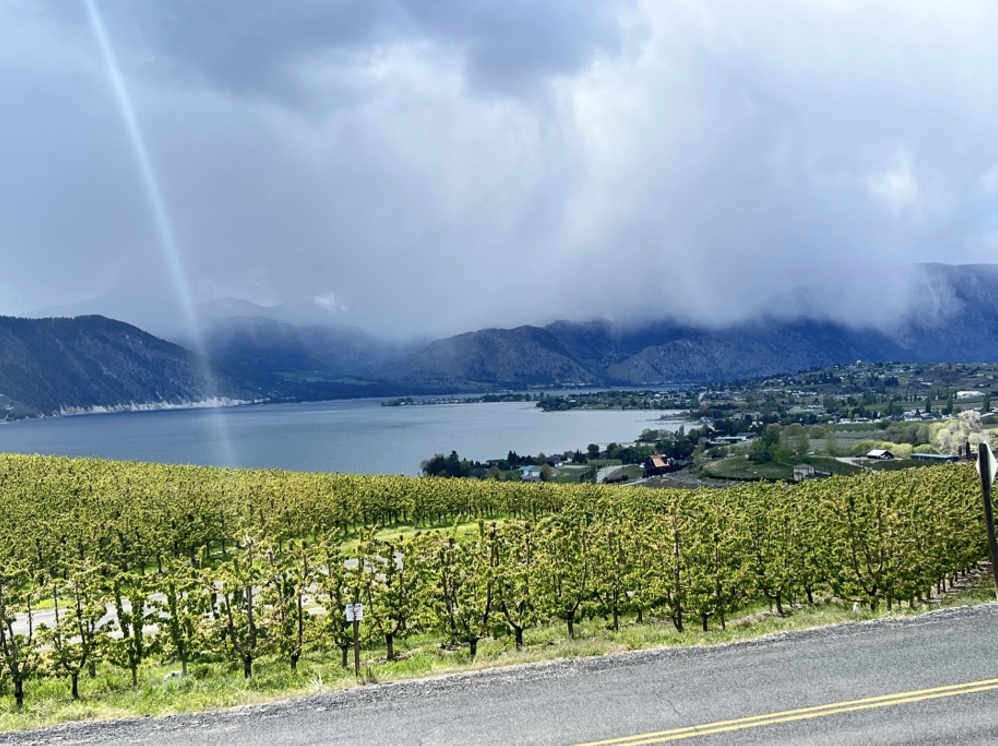
Winery Summary:
One of my favorite parts about working in a small winery is getting to participate in various events that at larger/corporate wineries are usually saved for the winemaker. With Cairdeas, I get to socialize with club members every day with the tasting room on site and get to travel around for events as well. At the beginning of the month I joined Charlie, Lacey, and our wineclub manager Kai in Seattle for a wine release since we had just had our party in Chelan the week before. Both events were with with our wonderful chef from Surrell and the following day Cairdeas, along with Damsel Cellars and Kevin White Winery, got to feature a couple of wines each for an 11 course Boushey Vineyard dinner with the Boushey’s present as well! One of the most acclaimed vineyards in the state, we get many of our grapes from there and it was so fun being able to taste other wines from that site. I think I was completely full by the 7th course?? Fun fact: Luanne Boushey was a teacher at Prosser High while I grew up and I actually lived in a little farmhouse right across the street from their vineyard entrance!
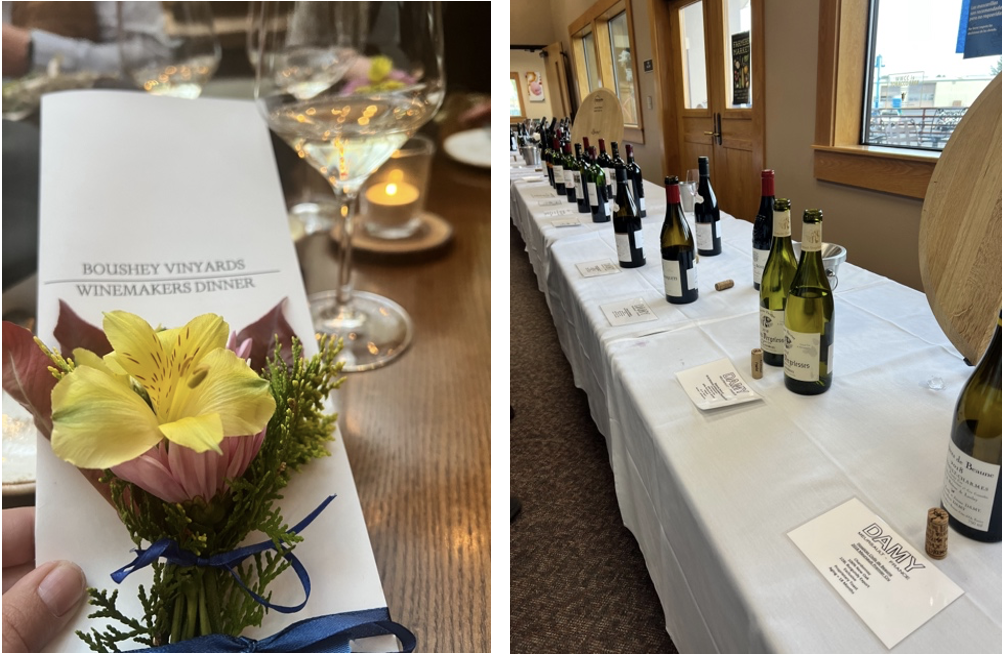
There was a French wine tasting hosted by Bouchard Cooperages in Walla Walla which meant a quick trip to learn more and taste different barrels, alternate vessels, and varietals. Then we came back and it was Rose release weekend! This is the only weekend we serve our rose on the tasting flight, because it’s SO good and goes so fast! Last year we were completely sold out in June… this year we bottled 564 cases and now at the end of May have just over 200 left… so we’ll see how long it lasts!
The Washington Wine Technical Group has multiple seminars throughout the summer so the following week we were back in Prosser for Basecamp where we discussed new issues arising in wine and go over thoughts with the current vintage!
Vineyard Summary:
On our way back from Basecamp we decided to check up on some of our Inland Desert and Boushey blocks to see how vines looked after the cold event. In Lake Chelan we’re about 2-3 weeks behind budbreak from last year and so our growth is also behind… but we also noticed that for the most part all the vines we saw in the Yakima Valley all looked to have about the same amount of growth as us and were all pretty equal across the board. There might be little pockets where there’s dips or low elevation that a couple vines showed damage, but for the most part everything looks good!
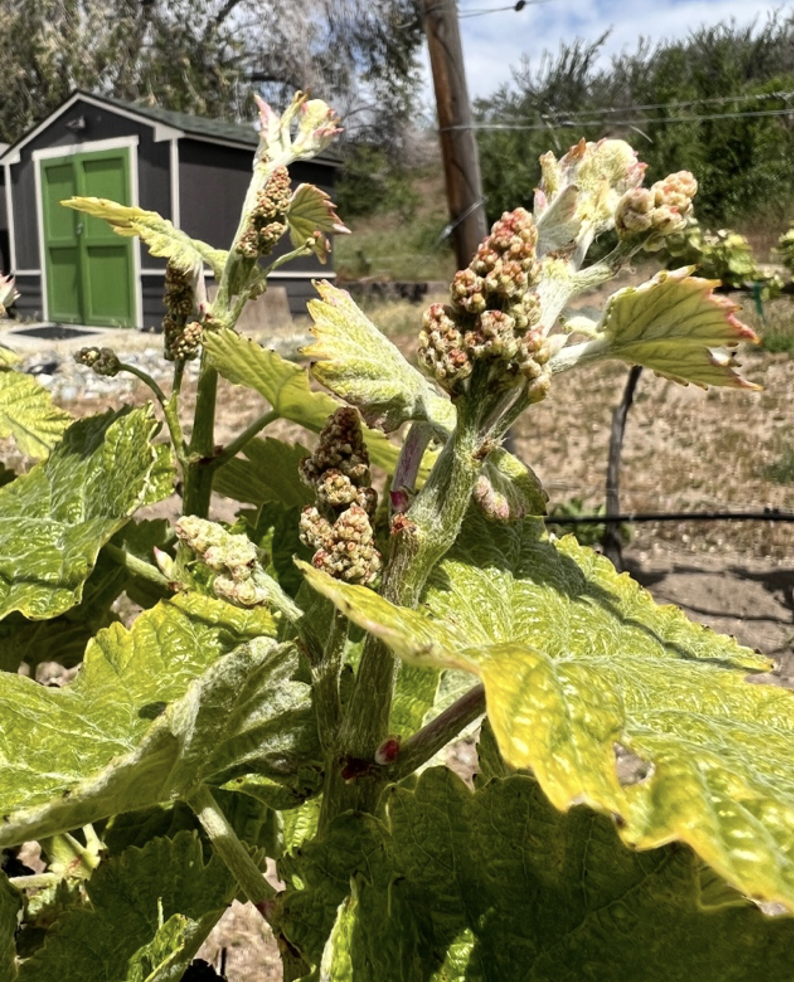
In fact, we’re seeing a lot of fruit this year! Which compared to years past is much needed. There were lower/smaller yields across the state in 2020 in part due to the season ending frost in October 2019. 2021 yields were again low and small due to the heat dome during the summer that completely shut down vine growth.
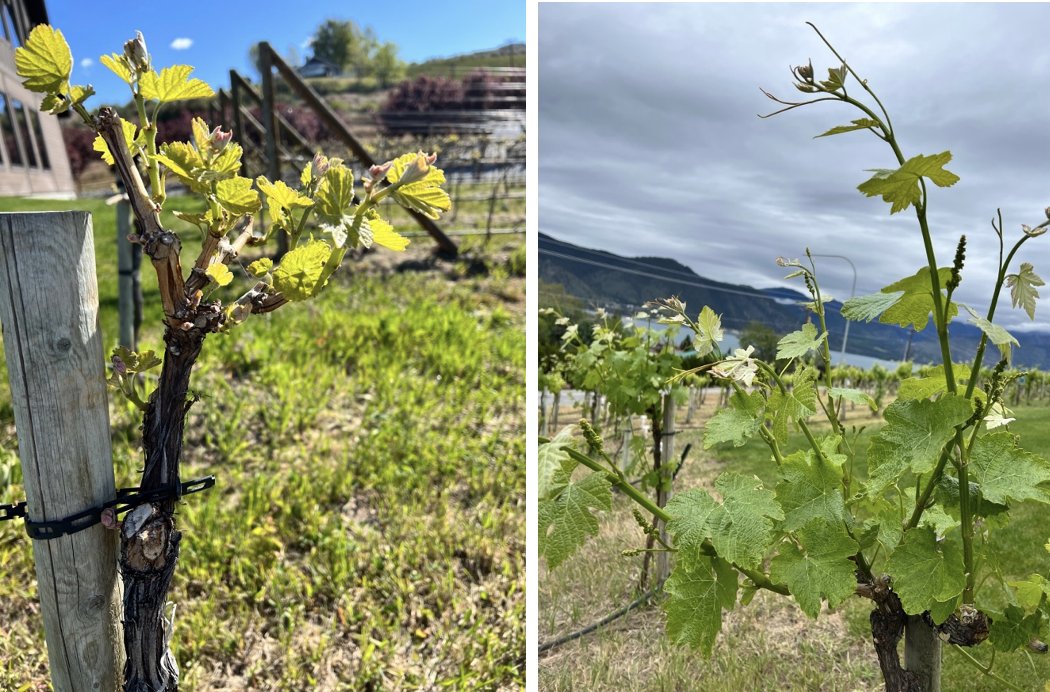
So lot’s of fruit is great right?? 2022 is currently tracking right along (if not slightly below) 2011… which is known as one of the coolest vintages in Washington wine. I don’t think I ever remember getting this much rain on the East side of the state. The season is early and a lot could happen, but this is something we have to keep in our minds as a potential issue. A cool year means it might be longer and harder to ripen fruit, so finally having a “normal” amount of fruit on the vine might not actually work if we can’t ripen it and therefore some might need to be dropped. It’s the last week of May and we’re still in the low 60s with lots of rain.
GDD, or growing degree days, is a viticulture term used to describe the season in relation to heat accumulation. From April 1 to October 31, the daily temperature above 50 degrees (baseline) in AVA’s around the state is tabulated and kept track through WSU and AgWeatherNet. The graphs I’ve included are from those programs. This allows us to not only create historical date and quantify it, like the cool year of 2011 (approx. 2400 in Lake Chelan) and the warm year of 2015 (3500 in Lake Chelan) but identify warm and cool AVA’s (Red Mountain vs Naches Heights). By calculating it daily/weekly we’re also able to notice current trends and establish where the vintage is going.
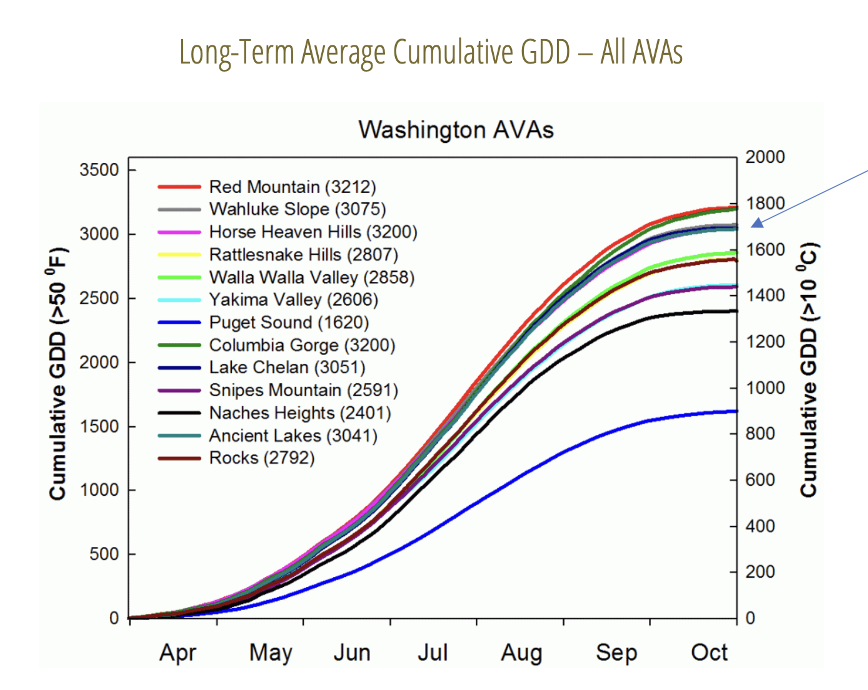
Lake Chelan has a shorter, more condensed growing season compared to most wine areas in the state because Spring starts later, but we’re actually able to accumulate 3000+ heat units and have comparable numbers to some of the warmer sites. According to GDD numbers, we’re right on track with the cool year of 2011. On May 27, 2011 we had 139 units; last year on May 27, 2021 we had 383 units, and on May 27, 2022 we had 136.
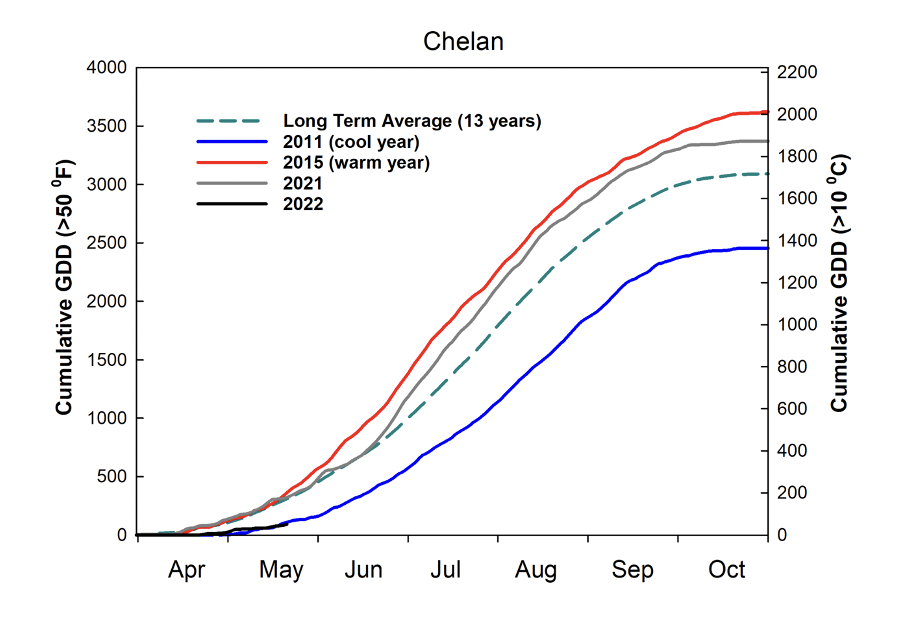
Traducido por Laurita Angulo.
Año fresco con un comienzo lento
Mayo ha sido un mes un poco lento, con bastantes otras actividades mientras esperábamos el clima cálido y la actividad de los viñedos. Pero poco a poco nos vamos ocupando más en el viñedo y es una locura pensar que entrar en junio significa que el verano está básicamente aquí.

Resumen de la bodega
Una de mis partes favoritas de trabajar en una pequeña bodega es poder participar en varios eventos que en las bodegas más grandes o corporativas generalmente se guardan para el enólogo. En Cairdeas, puedo socializar con los miembros del club todos los días en la sala de degustación y también puedo viajar para asistir a eventos. A principios de mes me reuní con Charlie, Lacey y nuestro gerente del club de vinos Kai en Seattle para un lanzamiento de vino ya que acabábamos de tener nuestra fiesta en Chelan la semana anterior. Ambos eventos fueron con nuestro maravilloso chef de Surrell y al día siguiente, Cairdeas, junto con Damsel Cellars y Kevin White Winery, presentaron un par de vinos cada uno para una cena de 11 platos en Boushey Vineyard junto con Boushey. Uno de los viñedos más aclamados del estado, obtenemos muchas de nuestras uvas de allí y fue muy divertido poder probar otros vinos de ese sitio. ¿Creo que estaba completamente llena para el 7o curso? Dato curioso: ¡Luanne Boushey era maestra en Prosser High cuando yo crecía y en realidad yo vivía en una pequeña granja justo al otro lado de la calle de la entrada de su viñedo!

Hubo una cata de vinos franceses organizada por Bouchard Cooperages en Walla Walla, lo que significó un viaje rápido para aprender más y probar diferentes barriles, recipientes alternativos y varietales. ¡Luego volvimos y era el fin de semana de lanzamiento de Rose! Este es el único fin de semana que servimos nuestro Rose en el vuelo de degustación, ¡porque es MUY buena y se va muy rápido! El año pasado nos agotamos por completo en junio… este año embotellamos 564 cajas y ahora a fines de mayo nos quedan poco más de 200… ¡a ver cuánto dura!
El Grupo Técnico de Vinos de Washington tiene varios seminarios durante todo el verano, por lo que la semana siguiente regresamos a Prosser para Basecamp, donde discutimos los nuevos problemas que surgen en el vino y repasamos las ideas sobre la cosecha actual.
Resumen del viñedo
En nuestro camino de regreso desde Basecamp, decidimos revisar algunos de nuestros bloques de Inland Desert y Boushey para ver cómo se veían las vides después del evento frío. En el lago Chelan, llevamos unas 2 o 3 semanas de retraso con respecto a la brotación del año pasado, por lo que nuestro crecimiento también está retrasado… pero también nos dimos cuenta de que, en su mayor parte, todas las vides que vimos en el valle de Yakima parecían tener aproximadamente la misma cantidad de crecimiento como nosotros y eran todos bastante iguales en todos los ámbitos. Puede que hubo algunos de bajos o poca elevación donde un par de vides mostraron daños, ¡pero en su mayor parte todo se ve bien!

De hecho, ¡estamos viendo mucha fruta este año! Que en comparación con años pasados es muy necesario. Hubo rendimientos más bajos/menores en todo el estado en 2020, en parte debido a la helada que terminó la temporada en octubre de 2019. Los rendimientos de 2021 fueron nuevamente bajos y pequeños debido a la cúpula de calor durante el verano que detuvo por completo el crecimiento de la vid.

¿¿Así que mucha fruta es genial verdad?? 2022 actualmente sigue a la par (si no un poco menos) de 2011… que se conoce como una de las cosechas más frias en el vino de Washington. Creo que nunca recuerdo haber llovido tanto en el lado este del estado. La temporada es temprana y pueden pasar muchas cosas, pero esto es algo que debemos tener en cuenta como un problema potencial. Un año frío significa que puede ser más largo y más difícil madurar la fruta, por lo que finalmente tener una cantidad “normal” de fruta en la vid podría no funcionar si no podemos madurarla y, por lo tanto, es posible que sea necesario eliminar una parte. Es la última semana de mayo y todavía estamos por debajo de los 60’s con mucha lluvia.
GDD, o días de grados de crecimiento, es un término vitivinícola utilizado para describir la temporada en relación con la acumulación de calor. Desde el 1 de abril hasta el 31 de octubre, la temperatura diaria por encima de los 50 grados (línea base) en AVA en todo el estado se tabula y se lleva un registro a través de WSU y AgWeatherNet. Los gráficos que he incluido son de esos programas. Esto nos permite no solo crear una fecha histórica y cuantificarla, como el año frío de 2011 (aprox. 2400 en el lago Chelan) y el año cálido de 2015 (3500 en el lago Chelan), sino también identificar los AVA cálidos y fríos (Red Mountain vs Naches Heights). Al calcularlo diariamente/semanalmente, también podemos notar las tendencias actuales y establecer hacia dónde se dirige la cosecha.

Lake Chelan tiene una temporada de crecimiento más corta y condensada en comparación con la mayoría de las áreas vinícolas del estado porque la primavera comienza más tarde, pero en realidad podemos acumular más de 3000 unidades de calor y tenemos números comparables a algunos de los sitios más cálidos. Según los números de GDD, vamos por buen camino con el año frio de 2011. El 27 de mayo de 2011 tuvimos 139 unidades; el año pasado el 27 de mayo de 2021 tuvimos 383 unidades, y el 27 de mayo de 2022 tuvimos 136.


Join the Conversation